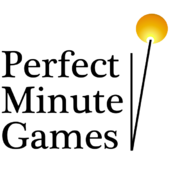Oops, I goofed a bit on the equation. Here's what it should be...
original * (maxCalls / 100) - trueReturnstweaked = ----------------------------------------- maxCalls - totalCalls
That's done so that the numerator will be with the same order of magnitude (roughly) as the denominator. (Also assumes original is between 0 and 100. If original is between 0 and 1, i.e., a fraction, replace the 100 with 1.)
~*~*~*~
Actually, Kylotan, it doesn't assume that it will get the same probability every time -- I was just using the same probability case as an example:
If you assume maxCalls == 100, your first call to the function (let's say original == 90 the first time), trueReturns == totalCalls == 0, so you get 90%.
Assume you get a true next time you call it 50% being the original percent. trueReturns == totalCalls == 1, so the real probability is (50-1)/(100-1) = 49/99 = 49.5%.
Assume you then get a false and call it at 30%. TrueCalls == 1 and totalCalls == 2. So your chance now is (30-1)/(100-2) = 29.6%. A similar call to 70% would give (70-1)/(100-2) = 70.4%. It will keep the odds you want.
As far as "getting rid of" the maxCalls number, I still think setting it "high enough" would work. All you have to do is make sure you don't call it that many times. If you set it to exactly the number of calls you'll be making, this equation will be exact. However, if you increase the maxCalls number, it won't be perfectly exact, BUT the probabilities will follow the distribution you're looking for.
Given your explanation of the problem (when you specified a number of calls), this is exactly the equation you're looking for. But if you want to make any number of calls to the function, all you have to make sure is that maxCalls is significantly bigger than the actual number of times you intend on calling the function; if you set it "high enough", you'll never run into that problem.
~ Dragonus
Edited by - Dragonus on August 22, 2001 9:56:57 AM





